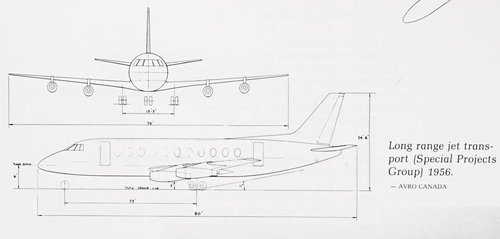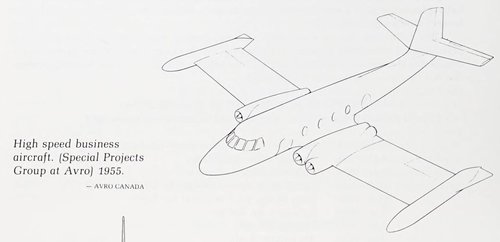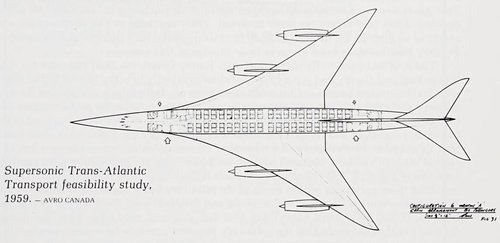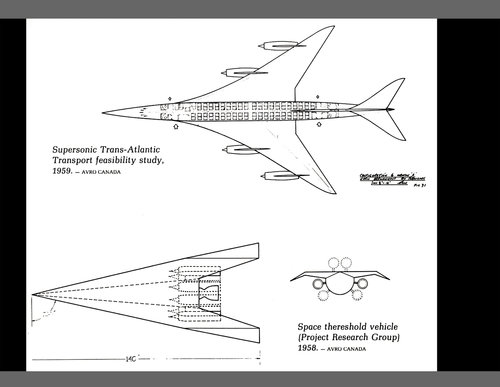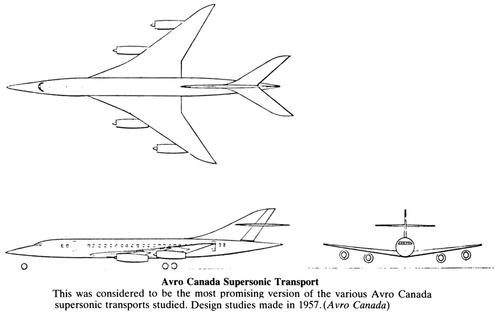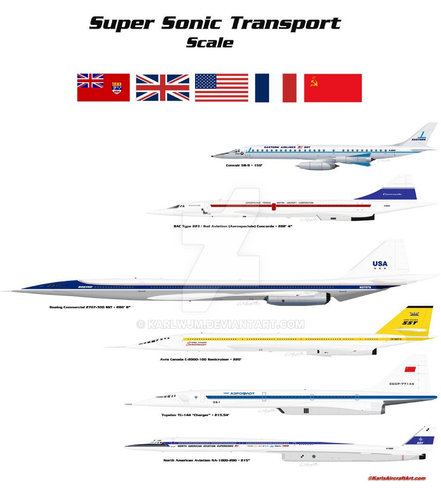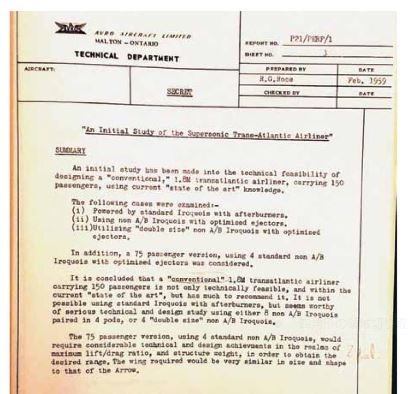You are using an out of date browser. It may not display this or other websites correctly.
You should upgrade or use an alternative browser.
You should upgrade or use an alternative browser.
Avro Canada Projects
- Thread starter Maveric
- Start date
- Joined
- 26 May 2006
- Messages
- 32,689
- Reaction score
- 11,918
- Joined
- 27 December 2005
- Messages
- 16,454
- Reaction score
- 19,154
Source?
- Joined
- 26 May 2006
- Messages
- 32,689
- Reaction score
- 11,918
Source?
The Avro Canada C102 Jetliner,By Jim Floyd.
- Joined
- 11 March 2012
- Messages
- 3,016
- Reaction score
- 2,696
AVRO Canada also had a hand in the failed Bobcat APC. The Bobcat project was started by Leyland of Canada which was bought by Canadian Car and Foundry. Then CCF was bought by AVRO. The concept was changed too often and it ended up looking like a camel .. er .. a horse designed by a committee. Bobcat was flawed from the start and the poor bloody infantry were consulted far too late to make it a viable vehicle. When the Bobcat failed trials circa 1960, the project was abandoned and the Canadian Army bought the ubiquitous FMC M113 APC.
blackkite
Don't laugh, don't cry, don't even curse, but.....
- Joined
- 31 May 2007
- Messages
- 8,298
- Reaction score
- 5,914
Thanks Maveric-san. Incredible drawings.
Trans Atlantic SST three side view must be beautiful.
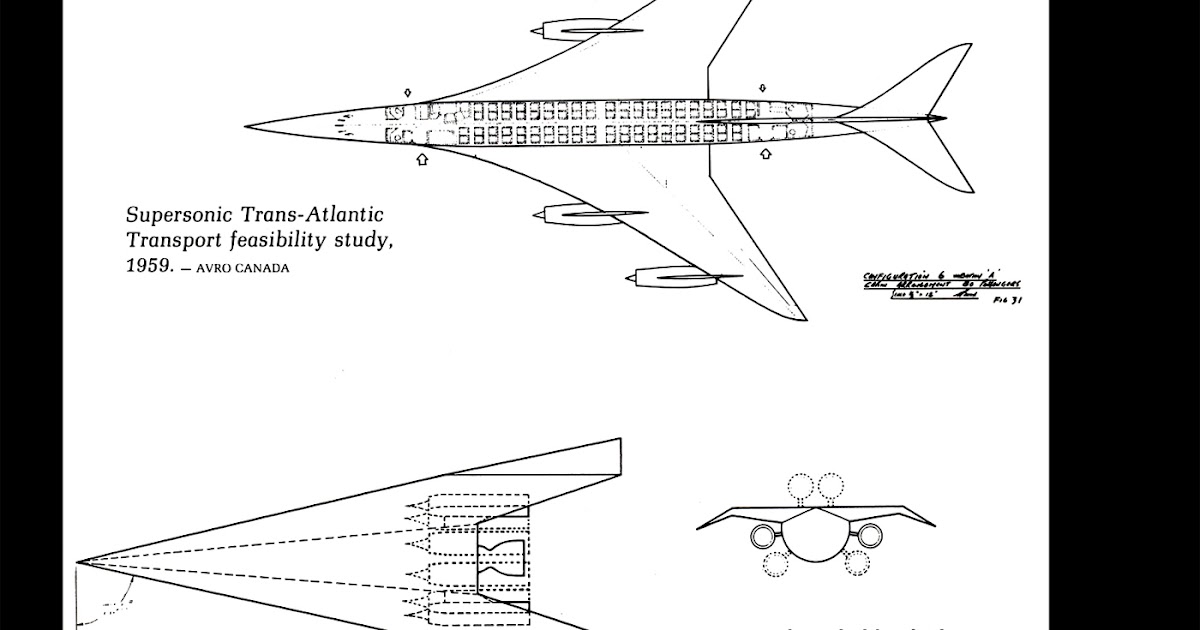
 neverwasanarrow.blogspot.com
neverwasanarrow.blogspot.com
Trans Atlantic SST three side view must be beautiful.

AVRO CANADA "STAT", yes… long before the Concorde, and long before the "Concordski", there was…
The Avro Canada STAT … and there it is above— And something called a Space Threshold Vehicle. Goodness! What the hell was that?? PROGRESS l...
Attachments
Last edited:
blackkite
Don't laugh, don't cry, don't even curse, but.....
- Joined
- 31 May 2007
- Messages
- 8,298
- Reaction score
- 5,914
Attachments
blackkite
Don't laugh, don't cry, don't even curse, but.....
- Joined
- 31 May 2007
- Messages
- 8,298
- Reaction score
- 5,914
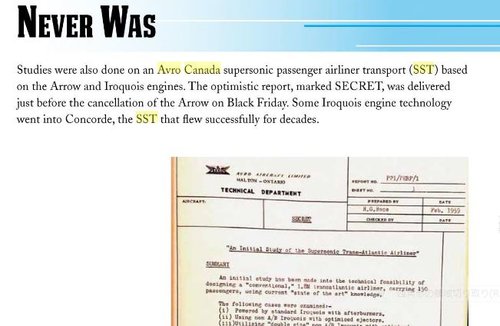
The Avro Arrow
When it first flew in 1957, the Avro Arrow was the world s best supersonic combat aircraft. It was the proudest achievement of the engineers and designers who came out of Canada s world-leading aircraft industry. They had delivered other notable aircraft, including the world s first passenger...
books.google.co.jp
Attachments
Last edited:
In 1956, Canadian Car & Foundry Company Limited (CCF) took control of Leyland Motors (Canada) Limited of Longueuil, Quebec. It was not long before production of the Canada began, to meet the needs of North American users, this vehicle being the first truck developed by this subsidiary of Leyland Motors Company Limited, a British manufacturer of automobiles, trucks and trolley buses. This new product was added to several buses and tractor-drawn trailers, a product line introduced in 1956.
Shortly before its acquisition by CCF, Leyland Motors (Canada) had won a contract to manufacture the prototype of the Bobcat, an amphibious and tracked armoured personnel carrier, the first vehicle of its type entirely designed in Canada, developed in collaboration with the Canadian Army. The company completed three prototypes, two personnel carriers and a self-propelled howitzer, then unarmed. All three worked quite well in testing.
Anxious to obtain an armoured personnel carrier at the lowest possible cost, the British Army considered adopting the Bobcat. This Canadian-British cooperation project fell through in late 1959. Indeed, the British military did not believe that it was possible to develop a family of armoured vehicles from the Bobcat. Another cooperative project, this time with West Germany, failed in the early 1960s.
In February 1961, the Canadian government announced that CCF was going to manufacture twenty Bobcats in a factory near Montreal, Quebec. Open tenders for an order of 480 additional Bobcats were to be announced in 1963. Around 1962, however, A.V. Roe Canada Limited, which controlled CCF, transferred control of the project to A.V. Roe Aircraft Limited, a company with no experience in ground vehicle manufacturing.
A prototype of the production version of the Bobcat began testing in February 1963. A report completed around June mentioned many shortcomings. The final development of the Bobcat would require additional funds that neither the Canadian Army nor Hawker Siddeley Canada Limited, a name adopted in May 1962, were willing to spend. In November, the Canadian Army’s headquarters recommended the abandonment of the Bobcat and the purchase of an American amphibious and tracked armoured personnel carrier declared operational in 1960, the famous M-113 from FMC Corporation. The federal government accepted this recommendation.
Stay safe,
Shortly before its acquisition by CCF, Leyland Motors (Canada) had won a contract to manufacture the prototype of the Bobcat, an amphibious and tracked armoured personnel carrier, the first vehicle of its type entirely designed in Canada, developed in collaboration with the Canadian Army. The company completed three prototypes, two personnel carriers and a self-propelled howitzer, then unarmed. All three worked quite well in testing.
Anxious to obtain an armoured personnel carrier at the lowest possible cost, the British Army considered adopting the Bobcat. This Canadian-British cooperation project fell through in late 1959. Indeed, the British military did not believe that it was possible to develop a family of armoured vehicles from the Bobcat. Another cooperative project, this time with West Germany, failed in the early 1960s.
In February 1961, the Canadian government announced that CCF was going to manufacture twenty Bobcats in a factory near Montreal, Quebec. Open tenders for an order of 480 additional Bobcats were to be announced in 1963. Around 1962, however, A.V. Roe Canada Limited, which controlled CCF, transferred control of the project to A.V. Roe Aircraft Limited, a company with no experience in ground vehicle manufacturing.
A prototype of the production version of the Bobcat began testing in February 1963. A report completed around June mentioned many shortcomings. The final development of the Bobcat would require additional funds that neither the Canadian Army nor Hawker Siddeley Canada Limited, a name adopted in May 1962, were willing to spend. In November, the Canadian Army’s headquarters recommended the abandonment of the Bobcat and the purchase of an American amphibious and tracked armoured personnel carrier declared operational in 1960, the famous M-113 from FMC Corporation. The federal government accepted this recommendation.
Stay safe,
Last edited:
Maybe this thread could be merged with this one ?
And this one ?
One thing is sure - with Iroquois, Avro had, indeed, their very own Olympus.
And they also had an analog FBW right from 1958 - very similar to Concorde (1969) F-16 (1974) and Mirage 2000 (1978) systems.
And this one ?
One thing is sure - with Iroquois, Avro had, indeed, their very own Olympus.
And they also had an analog FBW right from 1958 - very similar to Concorde (1969) F-16 (1974) and Mirage 2000 (1978) systems.
Hoping that a boat project will fit within this thread.
Around September 1960, Avro Aircraft entered into a partnership with United Marine, one of the largest American manufacturers of pleasure craft. Under the agreement, the aircraft manufacturer's new Marine Division committed to supplying fully equipped aluminum hulls for several types of Phantom Series luxury cabin cruisers manufactured by the Richardson Boat division of the American firm. Avro Aircraft designed this new type of hull in collaboration with the American firm Kaiser Aluminum and Chemical.
Avro Aircraft sent the hulls of boats destined for the American market to the Richardson Boat factory to have their superstructures mounted. In return, the American company supplied superstructures for the cabin cruisers destined for the Canadian market. The aircraft manufacturer hoped to offset the higher cost of aluminum over wood by using sophisticated machine tools and reusing every discarded part.
As Avro Aircraft prepared to deliver the first hulls, its management learned that all was not well in the United States. Almost all Richardson Boat employees had been laid off and rumors of closure were circulating. The aircraft manufacturer announced the disappearance of United Marine in March 1961. It acquired Richardson Boat, after having requested and obtained the resignation of the board of directors. Avro Aircraft also announced the sale of the other subsidiary of the defunct company, Colonial Boat, to an American firm. Already affected by increasingly aggressive rivals and the introduction of fiberglass-hulled boats, Richardson Boat declared bankruptcy in June 1962.
Barely one hundred and fifty aluminum-hulled cabin cruisers came out of the workshops in 1961-62.
Around September 1960, Avro Aircraft entered into a partnership with United Marine, one of the largest American manufacturers of pleasure craft. Under the agreement, the aircraft manufacturer's new Marine Division committed to supplying fully equipped aluminum hulls for several types of Phantom Series luxury cabin cruisers manufactured by the Richardson Boat division of the American firm. Avro Aircraft designed this new type of hull in collaboration with the American firm Kaiser Aluminum and Chemical.
Avro Aircraft sent the hulls of boats destined for the American market to the Richardson Boat factory to have their superstructures mounted. In return, the American company supplied superstructures for the cabin cruisers destined for the Canadian market. The aircraft manufacturer hoped to offset the higher cost of aluminum over wood by using sophisticated machine tools and reusing every discarded part.
As Avro Aircraft prepared to deliver the first hulls, its management learned that all was not well in the United States. Almost all Richardson Boat employees had been laid off and rumors of closure were circulating. The aircraft manufacturer announced the disappearance of United Marine in March 1961. It acquired Richardson Boat, after having requested and obtained the resignation of the board of directors. Avro Aircraft also announced the sale of the other subsidiary of the defunct company, Colonial Boat, to an American firm. Already affected by increasingly aggressive rivals and the introduction of fiberglass-hulled boats, Richardson Boat declared bankruptcy in June 1962.
Barely one hundred and fifty aluminum-hulled cabin cruisers came out of the workshops in 1961-62.
Similar threads
-
-
-
-
Avro Canada Project 1794 scale drawings
- Started by Justo Miranda
- Replies: 7
-

